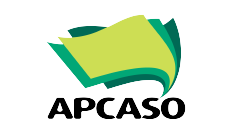This is the sixth and final blog in a series of case studies highlighting the results of the “Global Fund Realities on the Ground” a research study conducted by APCAS0’s APCRG Platform to measure civil society and communities’ experience when engaging in the key stages of country dialogue process under the Global Fund 2017-2019 funding cycle.
Indian civil society are actively engaged in the Global Fund funding process through their Country Coordinating Mechanism (CCM). Sometimes, however, they find engaging difficult when traditional stakeholders such as government and health institutions are less willing to delegate or share decision-making and responsibility to the wider group.
Indian civil society groups and key population-led organisations are a very organised and also a very diverse group, with representation from those living with and affected by the three diseases as well as larger formations that facilitate their engagement, such as the India Working Group for Health Advocacy (IWG) of the Global Fund Advocates Network Asia-Pacific. ”If you look at the Country Coordinating Mechanism, it has its own formulation, it has diverse populations.” Says Sylvie Merchant, HIV/AIDS Alliance representative into the IWG. Communities select their representatives into the available civil society seats in the CCM, and this representation covers the diversity of contexts that a country as large as India has.
Opportunities for communities and civil society to engage exist within the current format of the CCM meetings, in which the groups are able to present their agenda.
“As a PLWD (persons living with disability) group, we are trying hard to lobby to push our agenda in the CCM, but with limited understanding of GF program structure, systems and program outcomes PLWD members are not able to express their points.”
Daxa Patel, President of the National Coalition of People Living with HIV (NCPI+) acknowledges that there are differences in perspective among CCM members, such as whether to spend more on prevention or treatment, and that this becomes a source of contention.
In a survey conducted by APCASO APCRG in 2018, Indian civil society respondents remarked that they were not engaged in the preparation of the National Strategic Plan, the funding request nor the final country budget. These survey responses may have captured the frustration that civil society feels as they work within this engagement framework.
Patel asserted that civil society are actively engaging, but that “the CCM collectivisation in terms of community engagement…is not up to the mark, because the presence of CS is there in the CCM, but the decisions and power are with the government. It’s not like a democratic way; [instead] almost all decisions are coming from the government level.” She cites how decisions affect grant allocation where the government gets a larger share of the grant, and then eventually the grant is unutilised by the government. One consequence she mentions is that the unutilised funds affect the country’s fundability for the next round.
She also cites another instance where the Global Fund has rolled out funding to respond to the current COVID-19 pandemic and its impact on public health care, but differences in priorities have arisen among CCM members. For example, where civil society has asked for funding to focus on nutrition and shelter, the government does not agree because there is already existing infrastructure for these initiatives. “The government is also correct because existing infrastructure is there instead of making something new. Because this is not a lifelong problem, this is for the time being, so the current problem must be mainstreamed. Somehow our role is also to understand what we are asking and what is the impact of that agenda.”
Nevertheless, Indian civil society organisations continue to boost their engagement through collective and broader action. As Merchant notes, IWG is just one of the CS consortiums, there are other platforms that are trying to directly engage Global Fund both directly and through the CCM. “We may have agreements and disagreements, but then the idea is to work towards common goals.”
For situations where civil society and feel hampered by power inequalities, they may benefit from communication-related or leadership training to help them to handle power dynamics between members. In addition, in order to maximise its engagement, civil society needs strong systems in place to continually give feedback, guidance and information to the CCM. On the other hand, the CCM should also promote the development of mechanisms to ensure the continuous engagement of KP representatives to the CCM, such as caucus meetings, consultations, sharing and distribution of meeting documents, and opportunities to address community, rights and gender (CRG) concerns.
Sources
APCASO APCRG, 2019. Global Fund: Realities on the Ground report https://apcaso.org/apcrg/wp-content/uploads/2020/01/Global-Fund-Realities-on-the-Ground_APCASO.pdf
Global Fund, 2014. Engage: Practical tips to ensure the new funding model delivers the impact communities need. Retrieved from https://www.theglobalfund.org/media/5675/publication_engagecivilsociety_brochure_en.pdf

